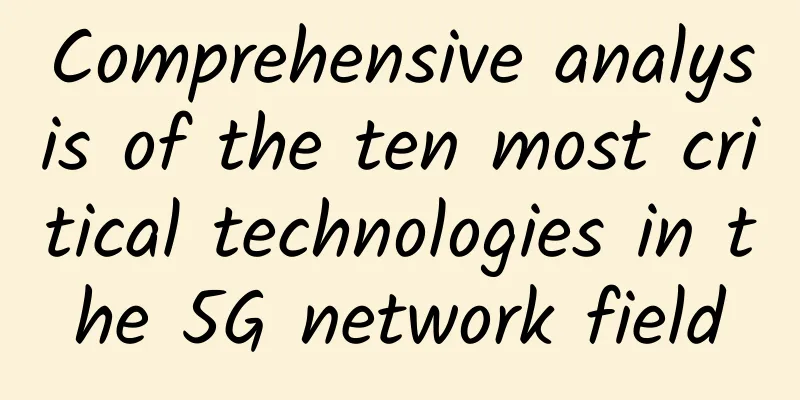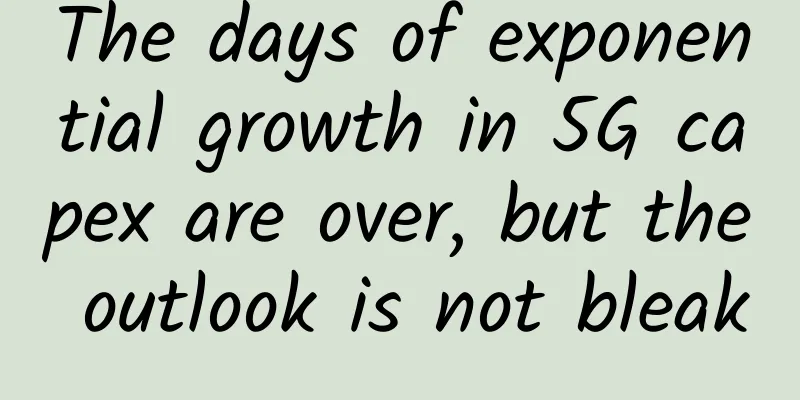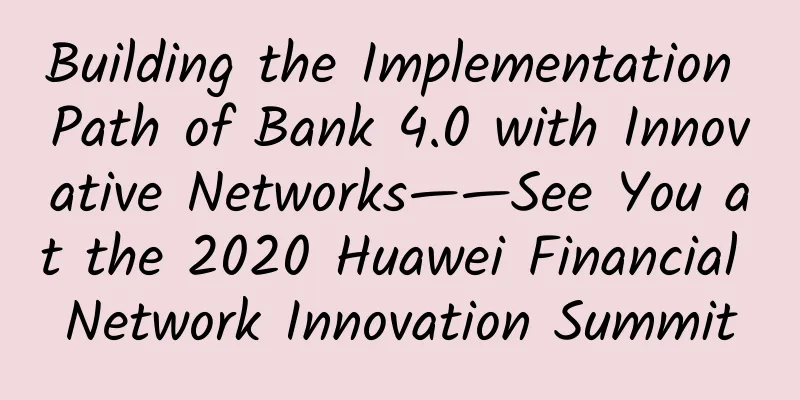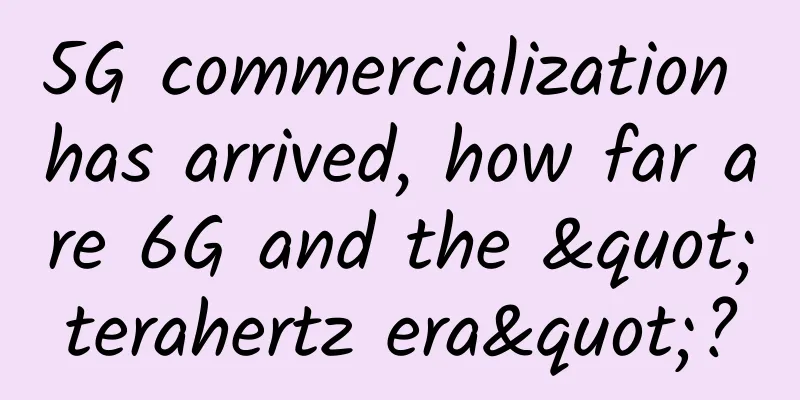Comprehensive analysis of the ten most critical technologies in the 5G network field

|
When it comes to 5G, many people's impression is that it has fast network speed, low latency and large bandwidth. Yes, this is the characteristic of the 5G era! As the fifth generation of mobile communication network, 5G has a peak theoretical transmission speed of tens of Gb per second, which is hundreds of times faster than the transmission speed of 4G network. The entire ultra-high-definition movie can be downloaded within 1 second. With the birth of 5G technology, the era of sharing 3D movies, games and ultra-high-definition (UHD) programs with smart terminals has come to us. As the mainstream communication technology in the next few years, 5G is waving to us. In 2019, some areas will achieve full coverage of 5G network, which is worth looking forward to. However, do you know what are the key technologies of 5G? How are they achieved? Let me take you to familiarize yourself with them.
1. Millimeter wave communication The millimeter wave frequency band is generally 30-300GHZ. Even when considering various losses and absorption, the atmospheric window can provide us with a bandwidth of 135GHz. In the case of scarce spectrum resources, the use of millimeter wave communication can effectively improve communication capacity. Due to the ultra-dense heterogeneous network of 5G, the distance between base stations is less than 200 meters. Due to the narrow beam characteristics of millimeter waves, they have strong anti-interference capabilities, and the absorption of millimeter waves by the air will reduce interference between adjacent base stations. 2. FBMC Technology FBMC was proposed to solve the problems of large side lobes of OFDM18 carriers, large interference between adjacent carriers when each carrier cannot be strictly synchronized, and the inability to support high-speed services such as continuous bandwidth of up to 1G in lower frequency bands. It is a multi-carrier technology based on filter banks (filterbankmulTIcarrier). The principle is to achieve multi-carrier modulation by synthesizing filter banks at the transmitting end and multi-carrier demodulation by analyzing filter banks at the receiving end. Jean-Baptiste Doré[13] mentioned that when CS (channel state information) is in an ideal condition, FBMC has higher energy efficiency than OFDM, but when CSI is not ideal, inter-symbol interference (ISI) and inter-carrier interference (ICI) will make FBMC's performance inferior to OFDM. He proposed special beamforming in MIMO scenarios to improve FBMC performance. 3. Massive MIMO Technology Large-scale MIMO uses multi-antenna technology. Large-scale antenna arrays can use the space division characteristics of antennas (with high-resolution spatial freedom) to enable the same time-frequency resources to serve several users at the same time, which can effectively improve spectrum efficiency and increase transmission reliability. Marzetta proposed that each base station be equipped with more antennas than the existing antennas for time division multiplexing conditions, and found that it can serve several users on the same time-frequency resources. The beamforming of multi-antenna technology can limit the beam to a very small range, so it can reduce interference and effectively reduce the transmission power. Multi-antenna technology brings more spatial freedom, so the channel response is more accurate, thereby reducing the degradation of channel performance in various random burst situations.
4. D2D Technology The traditional cellular communication system is networked in a way that base stations are used as the center to achieve cell coverage, but base stations and relay stations cannot move, and their network structure has certain limitations in flexibility. With the increasing number of wireless multimedia services, the traditional base station-centered service provision method can no longer meet the service needs of massive users in different environments. D2D technology can achieve direct communication between communication terminals without the help of base stations, expanding network connection and access methods. Due to short-distance direct communication and high channel quality, D2D can achieve higher data rates, lower latency and lower power consumption; through widely distributed terminals, it can improve coverage and achieve efficient use of spectrum resources; support more flexible network architectures and connection methods, and improve link flexibility and network reliability. 5. Simultaneous and same frequency full duplex In recent years, simultaneous co-frequency full-duplex technology has attracted the attention of the industry. With this technology, the transmitter and receiver of the communication transmit and receive signals at the same time on the same spectrum. Compared with the traditional TDD and FDD duplex methods, the air interface spectrum efficiency can be increased by 1 times in theory. Full-duplex technology can break through the spectrum resource usage restrictions of FDD and TDD methods, making the use of spectrum resources more flexible. However, full-duplex technology requires extremely high interference elimination capabilities, which poses a great challenge to interference elimination technology. At the same time, there is also the problem of co-frequency interference between adjacent cells. In multi-antenna and networking scenarios, the application of full-duplex technology is more difficult. 6. Ultra-dense heterogeneous networks 5G network is a heterogeneous network that uses macro base stations and low-power miniaturized base stations (Micro-BS, Pico-BS, Femto-BS) for coverage, integrating multiple wireless access technologies such as WiFi, 4G, LTE, UMTS, etc. As the cellular range gradually decreases, the spectrum efficiency has been greatly improved. As the cell coverage area becomes smaller, the location of the site may not be obtained, and the difficulty of further splitting the cell increases, so more low-power nodes can only be deployed by increasing the site deployment density. Ultra-dense heterogeneous networks can greatly improve power efficiency and spectrum efficiency, but they also inevitably introduce some problems. From the perspective of the physical layer, multi-rate access requirements are required, such as low-speed sensor networks to high-speed multimedia services. From the perspective of heterogeneous networks, ultra-dense heterogeneous networks require an air interface with a scalable frame structure to meet the access of different frequency bands.
7. New Network Architecture At present, the LTE access network adopts a flat network architecture, which reduces system latency, network construction costs and maintenance costs. In the future, 5G may adopt the C-RAN access network architecture. C-RAN is a green wireless access network architecture based on centralized processing, collaborative radio and real-time cloud computing architecture. The basic idea of C-RAN is to build a wireless access system covering hundreds of base station service areas or even hundreds of square kilometers by fully utilizing low-cost high-speed optical transmission networks to directly transmit wireless signals between remote antennas and centralized central nodes. The C-RAN architecture is suitable for the use of collaborative technologies, which can reduce interference, reduce power consumption, and improve spectrum efficiency. At the same time, it is easy to realize intelligent networking for dynamic use. Centralized processing is conducive to reducing costs, facilitating maintenance, and reducing operating expenses. 8. Dense Network In the future 5G communication, wireless communication networks are evolving towards network diversification, broadband, integration, and intelligence. With the popularization of various smart terminals, data traffic will experience a blowout growth. In the future, data services will be mainly distributed indoors and in hot spots, which makes ultra-dense networks one of the main means to achieve the 1,000-fold traffic demand of future 5G. Ultra-dense networks can improve network coverage, greatly increase system capacity, and divert services, with more flexible network deployment and more efficient frequency reuse. In the future, for high-frequency bands and large bandwidths, a more dense network solution will be adopted, and the deployment of small cells/sectors will be as high as 100 or more. 9. High frequency transmission The traditional working frequency bands of mobile communications are mainly concentrated below 3 GHz, which makes spectrum resources very crowded. In high-frequency bands (such as millimeter wave and centimeter wave bands), available spectrum resources are abundant, which can effectively alleviate the current situation of tight spectrum resources, achieve extremely high-speed short-distance communication, and support 5G capacity and transmission rate requirements. The application of high-frequency bands in mobile communications is a future development trend, and the industry is paying close attention to this. Sufficient available bandwidth, miniaturized antennas and equipment, and higher antenna gain are the main advantages of high-frequency millimeter wave mobile communications, but there are also disadvantages such as short transmission distance, poor penetration and diffraction capabilities, and easy to be affected by climate and environment. Issues in RF devices and system design also need further research and resolution. 10. Network Slicing Technology It is to divide the operator's physical network into multiple virtual networks, each of which meets different service requirements. Different networks can be divided by latency, bandwidth, security, and reliability to adapt to different scenarios. Network slicing technology can be used to divide multiple logical networks on an independent physical network, thus avoiding the need to build a dedicated physical network for each service, which can greatly save deployment costs. Summarize 5G technology will integrate and innovate in terminals, networks, wireless access, etc., with obvious advantages. 5G network can provide us with high-speed, high-reliability, and low-latency services, allowing us to enjoy streaming media, ultra-high-definition video and other services; at the same time, in the era of the Internet of Things, 5G network technology has a very flexible and scalable network architecture, which can be networked according to needs. At the same time, 5G network can cover users from different industries and carry out various business types, enriching our lives. With the breakthroughs in the above technologies, the future 5G era will come quickly. |
>>: Inspur Networks launches smart AP to connect new wireless ecosystem
Recommend
Why is NFV spreading so rapidly under the 5G trend?
5G's high bandwidth, low latency, and large c...
Radio Administration Bureau explains 5G frequency planning: 3GHz to 6GHz take the lead
5G frequency has been a hot topic at various wire...
DPtech assists the Road Network Center of the Ministry of Transport to provide security support for the comprehensive establishment of a ministerial-level monitoring system for highway video networking
Recently, Deepin Technology won the bid for the h...
The struggle between operators and users: Who decides my package?
What service do you like the most? The most likel...
Diagram: Page replacement algorithm
[[398509]] This article is reprinted from the WeC...
Sharktech: High-security VPS price reduction + 50% off annual payment from $29.7/year, 10Gbps unlimited traffic server $399/month 2*Gold 6148/128G/2T NVMe/Los Angeles and other computer rooms
In the first month of 2024, Sharktech sent a new ...
RAKsmart: Los Angeles/San Jose server flash sale starts at $30/month, Japan server flash sale starts at $59/month
RAKsmart is a foreign hosting company founded by ...
To cancel the caller ID fee, operators may wish to take the initiative
Is there a charge for caller ID? This charging it...
Application of 5G IoT in Commercial Buildings
The long-awaited 5G technology is finally here. I...
The world's first Android-enabled smart network tester is launched, and NETSCOUT shares the innovation story behind it
[51CTO.com original article] The most tense and e...
[11.11] Tencent Cloud 2C2G4M cloud server starts at only 50 yuan/year, 2C4G6M cloud server only 100 yuan/year
Tencent Cloud has launched this year's 11.11 ...
Hizakura: €17.99/year-AMD Ryzen7950x/1GB/15GB/4TB/Netherlands data center
The tribe once shared information about Hizakura,...
Why is HTTP 2.0 designed this way?
HTTP 1.0 was released in 1996, laying the foundat...
Ten tips to increase page browsing time
[51CTO.com Quick Translation] Increasing the brow...
Virtono: €29.95/year KVM-1GB/30GB/2TB/10 data centers available
Virtono recently launched the SPRING SALE 2022 ev...









